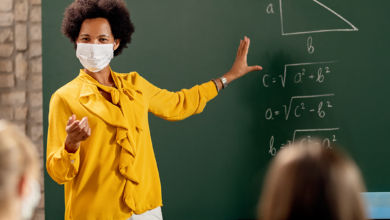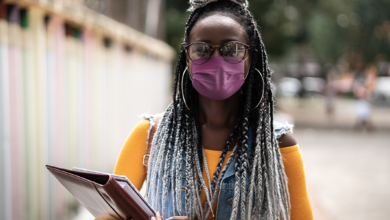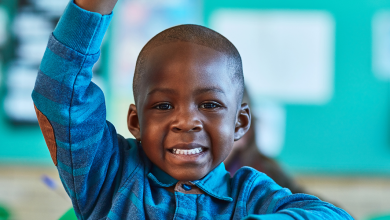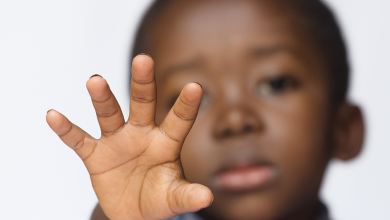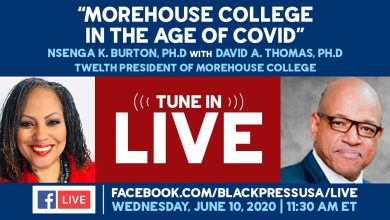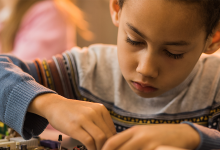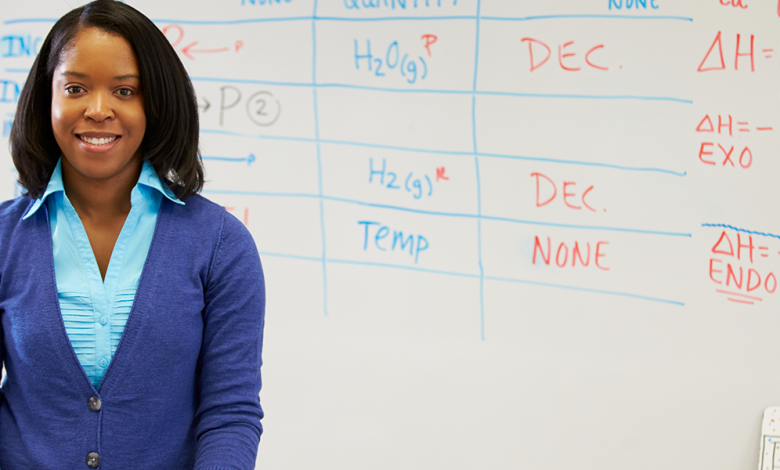
As schools reopen amid COVID-19, teachers worry about their mental health
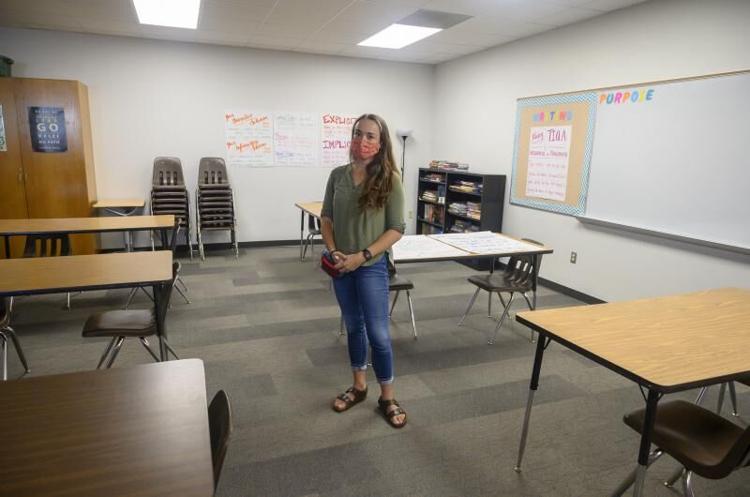
Teaching is already challenging enough without a pandemic shaking up how the classroom operates. As schools reopen, many districts are focused on keeping their staff and students safe from COVID-19. But the pandemic is also taking a toll on teachers’ mental health.
Andrea Ward teaches language arts to eighth graders in a suburb of Des Moines, Iowa, and her classroom looks very different this year.
There are eight tables spaced apart across the room with just two chairs at each. Near the door is a table full of cleaning products and hand sanitizer.
“Where normally I would have a mess of papers and things that I need to get back to students, it’s just going to be our sanitizing products,” Ward says.
Ward has spent months preparing her classroom at Johnston Middle School for the return amid COVID-19, and she’s incredibly anxious about it.
She motions to her smartwatch, which says her heart rate is twice what it normally is. “Because I’m thinking of all the things that I can’t forget, all the things that are going to be completely different this year, which to be honest, is almost everything.”
The increased stress began this spring, as schools closed and teachers had to adjust to online instruction. One study from Louisiana showed that the percentage of teachers with signs of depression nearly doubled.
Now, as teachers head back to the classroom, many are facing a growing list of stressors. They may be worried about keeping students socially distant — or keeping them engaged through an iPad.
“This is something that none of us are trained for,” says Jennifer Ulie-Wells. The former teacher runs Please Pass the Love, an Iowa non-profit that focuses on mental health in schools.
“I didn’t take a class as a pre-service teacher or even in graduate school, ‘Hey, how are you gonna respond to a pandemic?’ So teachers genuinely are doing the best that they can with what they have,” she says. “But it’s a lot and it just continues to become more and more.”
At Johnston Middle School, instructional mentor Jessie Todd is pushing staff to use the district’s free counseling service.
“We’re just making it really available, like, ‘Hey, it’s on the new teacher website. And look, it’s in your building.’ And every instructional coach has the phone number, right on their door,” she says.
But getting teachers to seek emotional and mental support can be really hard.
“There’s stigma associated with getting help,” says Chris Wilson, student well-being coordinator for the Johnston Community School District. “One thing that I’ve really talked to a lot of people about and then I think for myself personally, is feeling overwhelmed and stressed and anxious right now is your body’s normal, natural response to what’s going on. It doesn’t mean you have a mental health condition.”
Still, those feelings are real. According to a national poll by NPR and Ipsos this July, 82% of K-12 teachers were concerned about returning to the classroom. Two-thirds said they would prefer to teach remotely.
But in Iowa, many teachers are required by the state to teach in person. In late July, Gov. Kim Reynolds announced districts must conduct at least half their classes in person unless their county’s positivity rate is above 15%.
Sarah Valle, a choir teacher in the eastern part of the state, says that requirement meant her district had to scrap its plans to start mostly online. She’s really concerned about an outbreak.
“We’re knowingly being put in the situation where we will be exposed — chances are somebody in my building will be exposed — when we could be doing it a different way,” she says.
Valle says this stress has made her not want to go back. “If it were feasible for me to not teach this year, I would do it. Not because I don’t love it, but I’m just that scared.”
Valle can’t take this year off. So she started classes on Sept. 8 and she said she’s relying on friends and family for emotional support to get through the school year.
This post originally appeared in The Indianapolis Recorder.

